ISSN ONLINE(2319-8753)PRINT(2347-6710)
ISSN ONLINE(2319-8753)PRINT(2347-6710)
Nithya. K1, M. Ramasamy2
|
| Related article at Pubmed, Scholar Google |
Visit for more related articles at International Journal of Innovative Research in Science, Engineering and Technology
A multi-input DC-DC boost converter is proposed to draw power from several input sources and to supply the regulated output voltage for the load from the power sources. As the conventional source of energy is rapidly depleting and the cost of energy is rising, we turn towards renewable energy sources. Reason to choose renewable energy is because of its abundance and distribution throughout the earth. Input sources include renewable energy sources like Photovoltaic (PV) source and Wind source. A storage element battery is used to provide uninterrupted supply to the load. The battery utilized is bidirectional in its power flow hence the converter topology enables the storage element to be charged or discharged through input power sources. Multi-Input Converter (MIC) can deliver power from all of the input sources to the load either individually or simultaneously. MICs reduce the system size and cost by reducing the number of components. Three different operation modes are discussed based on the consumption of the battery. A PI controller is used for the closed loop performance of MIC. The different operating modes of the proposed converter are simulated using MATLAB.
Index Terms |
| Renewable energy sources, DC-DC converter, PI controller. |
INTRODUCTION |
| In recent days, the number of applications which require more than one power source is increasing. Distributed generating systems or micro-grid systems normally use more than one power source or more than one kind of energy source. Also, to increase the utilization of renewable energy sources, diversified energy source combination is recommended. The combination of more power sources and diversified power sources make it possible to obtain higher availability in a power system. A parallel connection of converters has been used to integrate more than one energy source in a power system. However, a MIC[7] can generally have the following advantages compare to a combination of several individual converters like cost reduction, compactness, more expandability and greater manageability. MICs are being used in aerospace, electric and hybrid vehicles, sustainable energy sources and microgrid applications. |
| India has tremendous energy needs and increasing difficulty in meeting those needs through traditional means of power generation. Electricity consumption has been increasing at one of the fastest rates in the world due to population growth and economic development. Our economy faces increasing challenges because energy supply is struggling to keep pace with demand and there are energy shortages almost everywhere in the country. Such chronic lack of energy and unreliable supplies threaten our economic growth. |
| Renewable Energy Sources (RES)[4] such as wind and solar, produce power intermittently according to the weather conditions rather than to the power demanded. Energy Storage Systems may be used to mitigate the intermittent generation from RES and to increase the quality of power supply. This makes it difficult to integrate the power generated from these RES into the electric network. One major advantage with the use of renewable energy is that as it is renewable and so will never run out. Their fuel being derived from natural and available resources reduces the costs of operation. It facilities generally require less maintenance. |
| Even more importantly, renewable energy produces little or no waste products such as carbon dioxide or other chemical pollutants, so has minimal impact on the environment. Renewable energy also has the advantage of allowing decentralized distribution of energy particularly for meeting rural energy needs. Human activity is overloading our atmosphere with carbon dioxide and other global warming emissions, which trap heat, steadily drive up the planet’s temperature, and create significant and harmful impacts on our health, environment and climate. Electricity production is majorly generated by coal-fired power plants which emits global warming gases. The air and water pollution emitted by coal and natural gas plants are avoided by using RES. Hence, Solar and Wind energy[13] sources are considered as the input sources for MIC. |
| Solar technologies are broadly characterized as either passive or active depending on the way they capture, convert and distribute sunlight. Active solar techniques use PV panels, pumps, and fans to convert sunlight into useful outputs. Passive solar techniques include selecting materials with favorable thermal properties, designing spaces that naturally circulate air, and referencing the position of a building to the Sun. Active solar technologies increase the supply of energy and are considered supply side technologies, while passive solar technologies reduce the need for alternate resources and are generally considered demand side technologies. PV cell[8] is a device that converts light into electric current using the photoelectric effect. The most modern systems use a method of sun exposure to generate electricity via semiconductors. Simple, direct exposure to the sun and its heat generate electrons that are then captured into the system and translated into electricity. The design can be used for a variety of things as small as powering a mobile phone to as large of a system as that needed to power the home. |
| Wind energy is the kinetic energy of air in motion, also called wind. Wind is the movement of air across the surface of the Earth, affected by areas of high pressure and of low pressure. The surface of the Earth is heated unevenly by the Sun, depending on factors such as the angle of incidence of the sun's rays at the surface which differs with latitude and time of day and whether the land is open or covered with vegetation. Wind power is the conversion of wind energy into a useful form of energy, such as using wind turbines to make electrical power, windmills for mechanical power, wind pumps for water pumping or drainage, or sails to propel ships. Wind power consumes no fuel, and emits no air pollution, unlike fossil fuel power sources. |
DC-DC CONVERTER |
| A DC-DC converter[3] is an electronic circuit which converts a source of DC from one voltage level to another. The DC-DC converters are widely used in regulated switch mode DC power supplies. The input of these converters is an unregulated DC voltage, and therefore it will be fluctuated. In these converters the average DC output voltage must be controlled to be equated to the desired value although the input voltage is changing. The regulation of the average output voltage in a DC-DC converter is a function of the on-time of the switch, the pulse width and the switching frequency. The output voltage control depends on the duty ratio D. The duty ratio is defined as the ratio of the on-time of the switch and the switching period. Duty cycle is given by the Equation |
| D-TON/TS (1) |
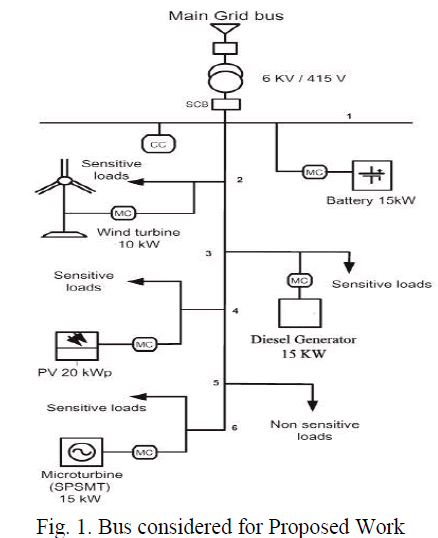 |
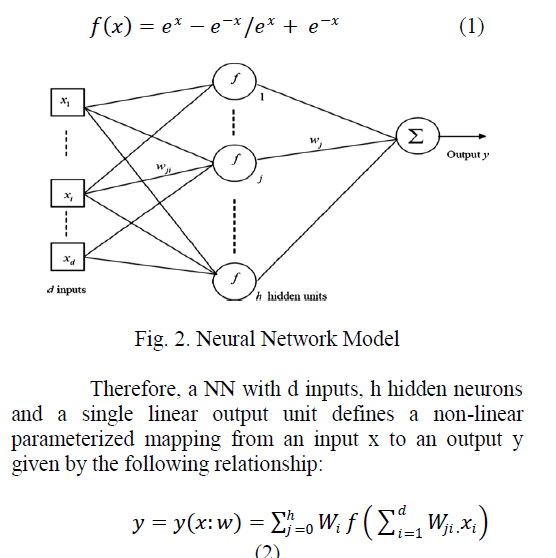 |
 |
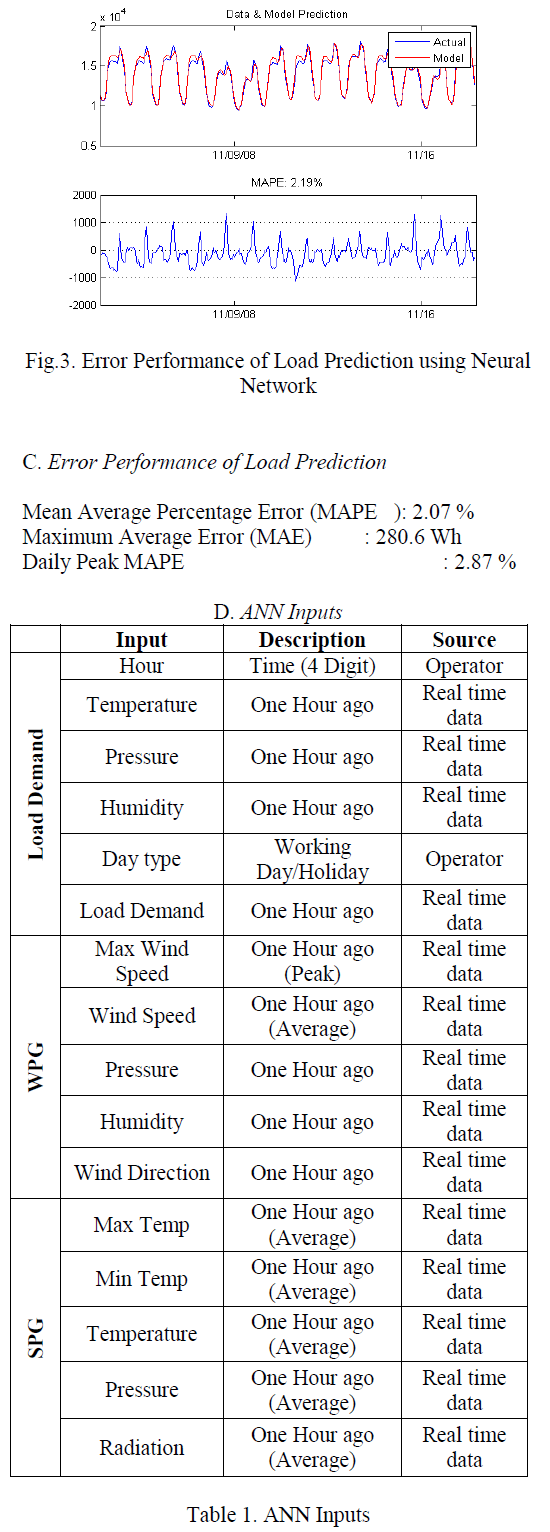 |
| converter topology, when switches S3 and S4 are turned ON simultaneously, currents iL1 and iL2 are conducted through the path of switch S4, the battery, and switch S3 which results in battery discharging. However, discharging operations of the battery can only last until switches S1 and/or S2 are conducting. As a result, the maximum discharge power of the battery depends on inductor currents iL1 and iL2. Therefore, in order to acquire a desired maximum charge power of the battery, the input power sources should be designed in proper current and voltage values. On the other hand, regulate the discharging power of the battery below the maximum discharging power. |
| C. Mode 3 |
| Figure 7 shows the third operation mode. In this operation mode, two input power sources V1 and V2 are responsible for supplying the load while the battery charging performance is accomplished. Therefore, the charging state of the battery should be provided in this operation mode. Referring to the converter topology, when switches S3 and S4 are turned OFF, by turning ON switches S1 and S2, inductor currents iL1 and iL2 are conducted through the path of diode D4, the battery, and diode D3; therefore, the condition of battery charging is provided. |
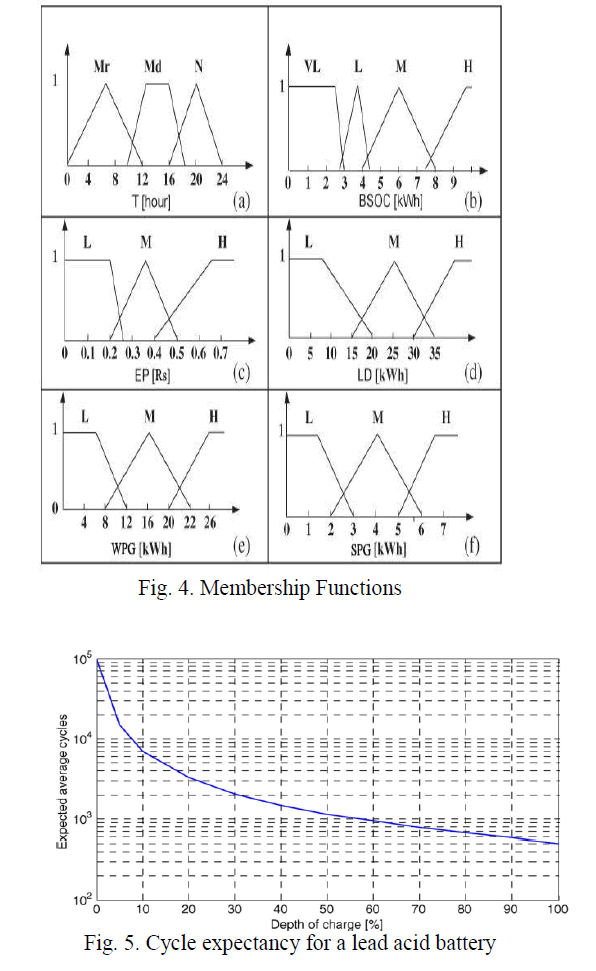 |
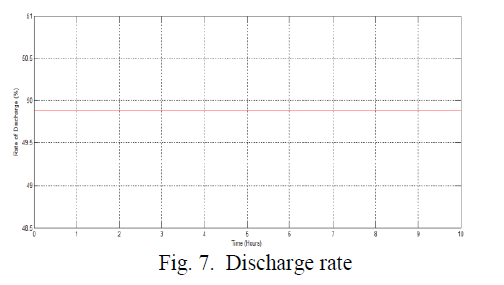 |
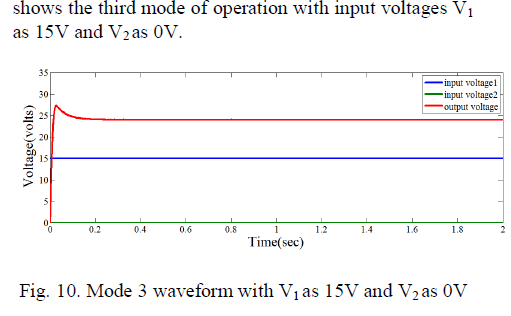 |
CONCLUSION |
| The proposed Multi-Input DC-DC converter produces regulated output voltage to the load from the different input sources. MIC supplies power to the load either individually or simultaneously from the input sources. As the power produced by the renewable energy sources like solar and wind which are intermittent due to change in weather conditions, a storage element battery is provided. Battery starts discharging, when the power delivered by the input sources is less than the load voltage to provide a continuous supply to the load. Instead of using individual converter for each source in hybrid system, MIC is used which reduces the system size and cost. |
References |
|